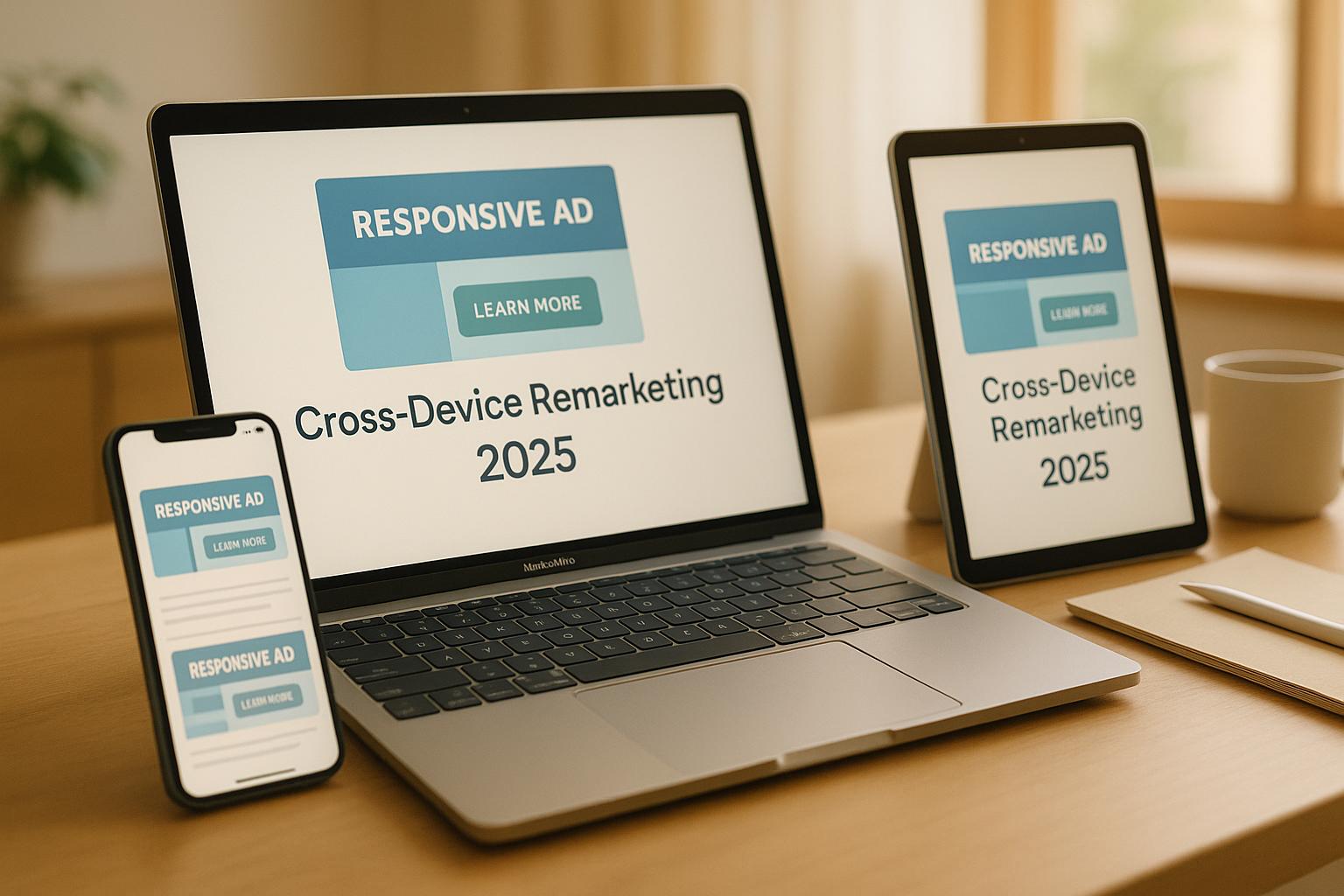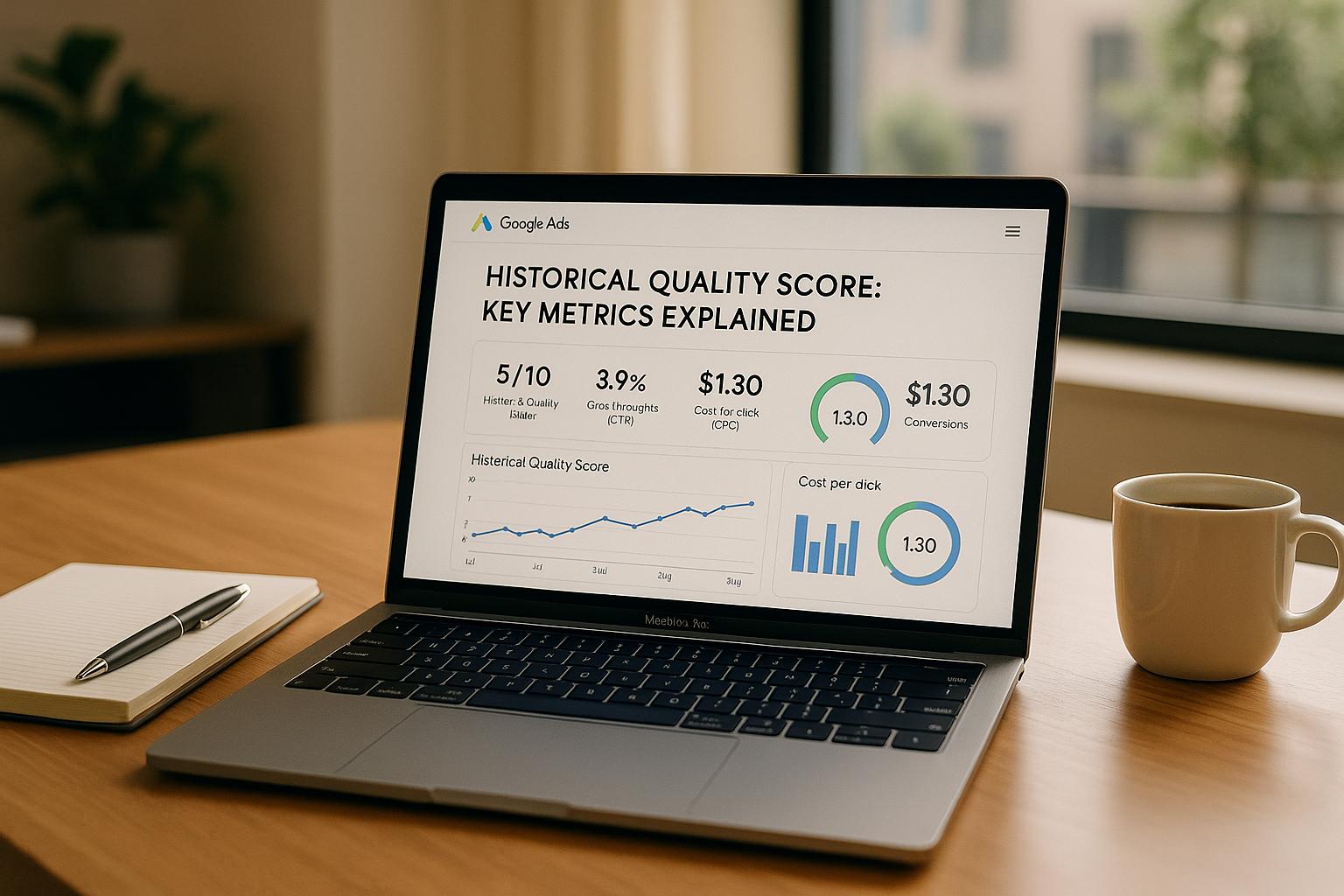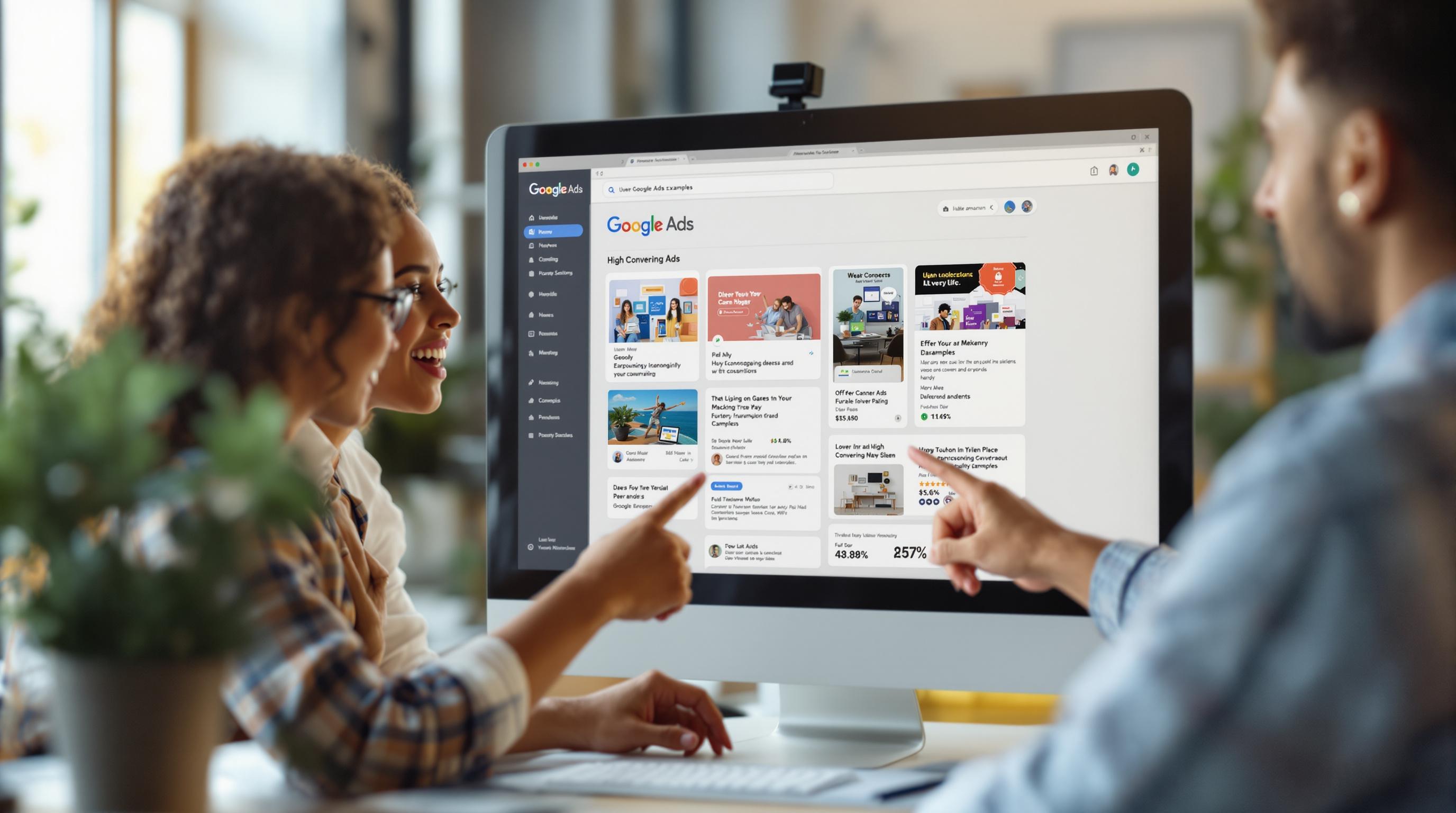- Understand Your Audience: Match headlines to user intent and solve their problems.
- Use Keywords Effectively: Integrate keywords naturally without stuffing.
- Focus on Benefits: Highlight what users gain, not just features.
- Be Specific: Use numbers, stats, and urgency to grab attention.
- Tailor for Platforms: Adjust headlines for Google, social media, or shopping ads.
- A/B Test: Continuously test variations to find what works best.
- Stay Honest: Avoid clickbait and exaggerated claims.
- Keep Improving: Monitor performance and update headlines regularly.
Quick Tip:
Great headlines are clear, relevant, and actionable. Use tools like Google Keyword Planner or A/B testing platforms to refine your approach.
Let’s dive deeper into these strategies to make your ads stand out.
Top 15 Tips for How to Write Google Ads Headlines That Convert
1. Know Your Audience and Their Intent
If you want PPC ad headlines that deliver results, start by understanding your audience's needs and search behavior. Aligning your headlines with what users are looking for can lead to better engagement and more conversions.
Identify Audience Problems and Needs
Tools like Google Keyword Planner, customer reviews, and analytics data are great for spotting user pain points and search habits. By addressing these issues, your PPC headlines will do more than just grab attention - they'll encourage action.
Use Clear and Relevant Language
"The headline is the most obvious part of your PPC ad, so take advantage and make every word count" [3].
Tailor your headlines to match different search intents. Here's how intent shapes effective headlines:
| Search Intent | Example Headline | Why It Works |
|---|---|---|
| Informational | "5-Minute Guide: Fix Common Excel Errors" | Offers a quick fix |
| Commercial | "Save 30% on Professional Tax Software" | Highlights clear value |
| Transactional | "Buy iPhone 15 Pro - Free Next-Day Delivery" | Provides direct incentive |
To craft strong headlines:
- Use action words like save, learn, or get
- Add numbers or stats for specificity
- Keep your language simple and focused
- Prioritize clarity over cleverness
Research from CoSchedule shows that clear, intent-driven headlines improve PPC performance by removing confusion [1].
Once you’ve nailed down your audience’s intent, the next step is weaving the right keywords into your headlines effectively.
2. Use Keywords Effectively in Headlines
Using keywords wisely can significantly improve ad visibility and performance. In fact, research shows that 80% of users only read the headline portion of ads [3].
Avoid Overusing Keywords
Striking the right balance is crucial when incorporating keywords. While they’re necessary for relevance, overloading your headlines with keywords can backfire. Here's how different approaches impact your ad:
| Approach | Example | Impact |
|---|---|---|
| Natural Integration | "Professional Tax Software - 30% Holiday Discount" | Keeps it readable while targeting key terms |
| Keyword Stuffing | "Tax Software Tax Filing Tax Professional Software" | Looks spammy and lowers quality score |
| Strategic Placement | "Tax Software 2025: Easy Filing for Professionals" | Prioritizes keywords at the start for better visibility |
To get the most out of your keywords, place the most important ones at the beginning of your headline. This improves visibility while ensuring your headline remains easy to read [4].
Include Seasonal or Trending Keywords
Adding seasonal or trending keywords can help your PPC ads stand out, especially during high-demand periods. Tools like Google Trends are great for spotting emerging patterns and seasonal opportunities that align with your product or service.
"The headline is the most obvious part of your PPC ad, so take advantage and make every word count" [3].
Tips for using seasonal keywords:
- Refresh your headlines with seasonal terms and test variations to see what works best.
- Make sure the seasonal terms match your actual offering.
- Consider using dynamic keyword insertion to automatically customize your headline with the user's exact search term when it matches your targeted keywords.
For example, instead of "Designer Watches - Free Shipping", try "Holiday Gift Guide: Designer Watches with Express Delivery" to appeal to seasonal shoppers.
Once your keywords are set, focus on crafting headlines that appeal emotionally and clearly highlight the benefits to grab your audience’s attention.
3. Focus on Benefits and Emotional Appeal
Headlines that highlight benefits and tap into emotions tend to outperform those focused purely on features. By blending clear value with emotional appeal, your PPC ads can attract more engagement and drive better conversions.
Highlight Benefits, Not Just Features
Transform features into benefits that address your audience's needs. Here's how to craft better headlines:
| Benefit Type | Strong Headline | Why It Works |
|---|---|---|
| Pain Point Solution | "Never Lose Important Files Again" | Eases the fear of data loss |
| Time Savings | "Write Blog Posts 5x Faster" | Promises increased productivity |
| Cost Efficiency | "Cut Reporting Time & Costs by 50%" | Highlights tangible savings |
For example, instead of advertising "Professional Email Marketing Software", go with something like "Boost Email Open Rates by 35% - Guaranteed."
Tap Into Emotional Triggers
Pair emotional triggers with clear benefits to craft irresistible headlines:
- Urgency: "24-Hour Flash Sale: Ends Tonight"
- Curiosity: "10,000+ Marketers Switched - Here's Why"
- Achievement: "Join 500,000+ Professionals Who Doubled Their Productivity"
Stay genuine while combining logical benefits with emotional hooks [4]. For instance, "Save 30% Today: Transform Your Home Office" blends financial savings with a sense of improvement.
Pro Tip: Adjust emotional triggers based on the context - use celebratory tones during holidays or stress relief messaging during tax season to make your ads more relevant.
Leverage tools from the Top PPC Marketing Directory to refine and test your headlines for the best results.
Once your headlines are benefit-focused and emotionally engaging, focus on adding specifics and urgency to maximize their impact.
4. Include Numbers, Data, and Specific Details
Adding numbers and data to PPC headlines can increase both trust and click-through rates. Concrete figures grab attention and make your offer more believable.
When you combine specific data with emotional appeal, your headlines can connect on both a logical and personal level.
Use Specific Metrics to Strengthen Headlines
Turn generic claims into attention-grabbing headlines by including precise details:
| Number Type | Weak Headline | Strong Headline | Why It Works |
|---|---|---|---|
| Percentages | "Save Money Today" | "Save 20% on All Orders" | Highlights savings |
| Dollar Amounts | "Affordable Plans" | "Plans Starting at $9.99/mo" | Defines the cost |
| Statistics | "Many Languages Available" | "300+ Language Transcriptions" | Shows scale |
| Time Frames | "Quick Delivery" | "Express Delivery in 2 Hours" | Sets expectations |
Add Urgency to Motivate Action
Time-sensitive headlines are effective because they push readers to act quickly. Here's how to create that sense of urgency:
| Urgency Type | Example Headline | What Makes It Work |
|---|---|---|
| Limited Time | "24-Hour Flash Sale: 30% Off" | A clear deadline |
| Stock Limits | "Only 5 Spots Left at $99" | Creates scarcity |
| Seasonal | "Black Friday: 50% Off Ends Tonight" | Tied to a specific event |
| Early Bird | "First 100 Orders: Extra 15% Off" | Rewards quick action |
Pro Tip: Always ensure your urgency claims are truthful. Misleading tactics can damage your reputation and may even violate advertising regulations [2].
For maximum impact, combine both approaches. For example, instead of saying "Limited Time Offer", go with "48 Hours Only: Save $50 on Premium Plans". This approach makes your headline both specific and time-sensitive.
Once your headlines are optimized with data and urgency, the next step is adapting them for different platforms to expand their reach.
sbb-itb-89b8f36
5. Tailor Headlines for Different Platforms
Each PPC platform serves different user behaviors and ad formats, so crafting headlines that align with platform-specific needs is key. This approach ensures your ads connect with the audience and perform effectively.
Adjust for Specific Platforms
Every advertising platform has unique headline requirements. Here's a quick breakdown:
| Platform | Requirements | Tips for Success |
|---|---|---|
| Google Search Ads | 30-character limit | Focus on intent and include primary keywords. |
| Google Shopping Ads | Product-focused format | Highlight key product details like specs and pricing. |
| Social Media PPC | Variable character limits | Use a conversational and emotional tone. |
| Display Network | Short headlines | Emphasize branding and visual appeal. |
For example, a user browsing Google Shopping Ads is likely closer to making a purchase compared to someone casually scrolling through social media. Adjust your messaging to reflect these differences.
Leverage Responsive Search Ads (RSAs)
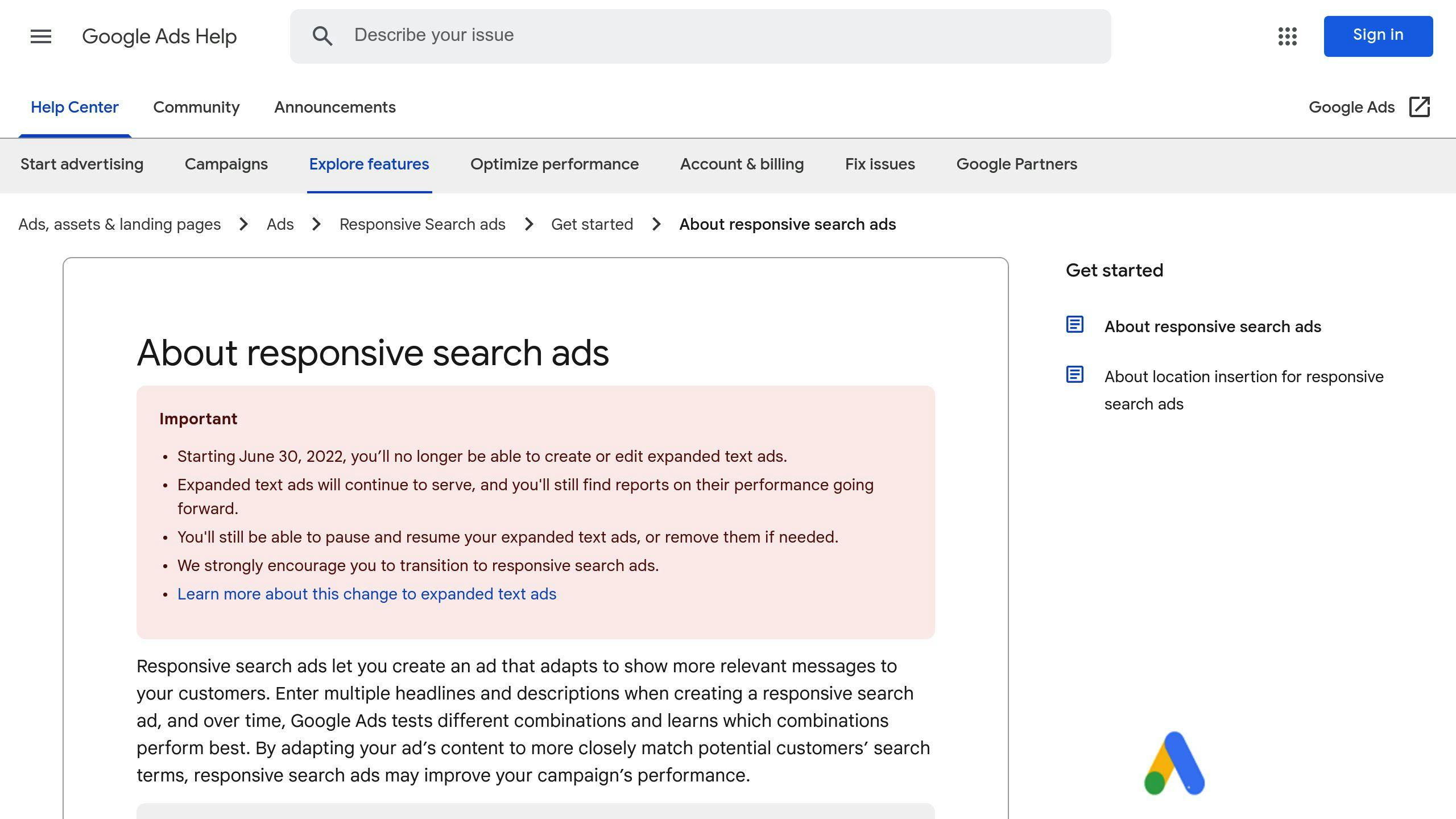
Responsive search ads (RSAs) allow you to test multiple headline variations automatically, helping you discover what resonates most with your audience. Here's how to make the most of them:
| Strategy | How to Apply It | What You Gain |
|---|---|---|
| Mix It Up | Use headlines of varying lengths and keywords. | Broader testing opportunities. |
| Stay Consistent | Include your main message in multiple headlines. | Ensures visibility and message clarity. |
| Test Benefits | Experiment with different appeals or benefits. | Pinpoint what drives the best results. |
Pro Tip: Always include your main message in at least two headlines to maintain consistency and boost visibility across variations.
For Google Search Ads, aim for clear, keyword-focused headlines that align with user intent - like "Tax Software 2025: Simplify Filing for Professionals." On the other hand, Shopping Ads should emphasize product features and unique selling points to grab attention in competitive product listings.
Once you've tailored your headlines for each platform, continuous testing and fine-tuning will help you maximize performance.
6. Test and Refine Headlines with A/B Testing
A/B testing is a powerful way to fine-tune your PPC ad headlines and improve their performance. By comparing different headline variations, you can discover what resonates most with your audience and drives better results.
Experiment with Different Variations
Test one variable at a time to ensure your results are clear and actionable. Here's a breakdown of what you can test:
| Testing Element | What to Test | Example Variations |
|---|---|---|
| Discount Format | How discounts are presented | "Save 20% Today" vs. "Get $20 Off" |
| Call-to-Action | Action-oriented phrases | "Shop Now" vs. "Browse Collection" |
| Benefit Focus | How benefits are framed | "Free Next-Day Delivery" vs. "Arrives Tomorrow" |
| Urgency Level | Creating a sense of urgency | "Limited Time Offer" vs. "24-Hour Sale" |
By running these tests, you can identify which emotional triggers or keyword strategies connect best with your audience. Aim for at least 1,000 impressions per variation to ensure your insights are reliable.
Review Data and Make Adjustments
When analyzing A/B test results, focus on these critical metrics:
| Metric | What to Look For | Actionable Insights |
|---|---|---|
| Click-Through Rate (CTR) | How each variation performs in driving clicks | Spot patterns in top-performing headlines |
| Conversion Rate | Which headlines lead to actual sales | Prioritize quality traffic over volume |
| Cost Per Conversion | How much each conversion costs | Balance CTR with conversion expenses |
| Return on Ad Spend (ROAS) | Overall profitability of your campaign | Adjust budgets based on headline performance |
Quick Tip: External factors like seasonal trends or competitor activity can influence results, so consider these when evaluating your data.
Keep refining your headlines by testing new variations, documenting successful strategies, and staying updated with trends. Always aim for transparency in your messaging - avoid exaggerated claims to maintain audience trust and credibility.
7. Avoid Misleading or Exaggerated Claims
Crafting PPC ad headlines is all about finding the sweet spot between being persuasive and staying honest. Transparent headlines not only help you build trust but also lead to better campaign results by attracting high-quality leads and improving ad scores.
Be Transparent
Being clear and upfront can directly influence click-through rates and conversions. Here's how to create headlines that are both engaging and honest:
| Element | Do This | Don't Do This | Why It Matters |
|---|---|---|---|
| Discounts | "Save 20% Today - Limited Stock" | "Unlimited Savings!" | Sets accurate expectations |
| Statistics | "4.5/5 Average Rating (2,000+ Reviews)" | "Best Product Ever" | Builds credibility |
| Availability | "Only 10 Units Left at $99" | "Exclusive Deal Inside" | Reduces bounce rates |
| Time Limits | "Sale Ends Dec 31 - 30% Off" | "Last Chance!" | Maintains trust |
Pro Tip: Use specific numbers and details to highlight benefits. Avoid vague phrases like "best" or "unmatched."
Avoid Clickbait
Clickbait headlines might grab attention initially, but they can harm your brand and campaign performance over time. Stick to honest advertising practices and follow FTC guidelines to maintain credibility:
| Misleading Headline | Better Alternative | Why It Works |
|---|---|---|
| "Guaranteed Success or Money Back!" | "95% Client Satisfaction Rate" | Relies on verifiable metrics |
| "Unbelievable Deals Inside" | "Winter Sale: 20-30% Off" | Clearly communicates value |
"The key is to match the user's search intent and promise clear, enticing value." - CoSchedule [1]
When your headlines align with what users are looking for, you’re more likely to attract leads who are genuinely interested. These leads tend to convert better, which positively impacts key metrics like bounce rates, time spent on your site, and overall campaign performance.
8. Continuously Improve and Update
Keeping your ad campaigns effective means regularly revisiting and improving your strategies. The digital world moves fast, and staying competitive requires frequent updates to your ad headlines.
Monitor Performance
Metrics like Click-Through Rate (CTR) and Conversion Rate can reveal how well your headlines connect with users. Here's a quick breakdown of what to track and why:
| Metric | What to Track | Why It Matters |
|---|---|---|
| Click-Through Rate (CTR) | Weekly changes in CTR | Shows how appealing your headlines are |
| Conversion Rate | Conversion patterns | Highlights how effective your headlines are at driving actions |
| Cost-per-Click (CPC) | CPC variations | Helps you measure cost efficiency |
Use tools like Google Ads' "Headline" report to dig into the performance of each variation. A weekly dashboard can help you spot trends and identify which headlines are worth replicating across campaigns.
Update for Trends and User Behavior
To keep your ads relevant, adjust them based on shifting user preferences and market trends. According to WordStream, using seasonal headlines can increase CTR by up to 25% [2].
| Timeline | Action Items |
|---|---|
| Monthly | Review top-performing search terms |
| Quarterly | Refresh your value propositions |
| Seasonal | Add trending themes to your headlines |
"The key to sustained PPC success is finding the balance between continuous improvement and data-driven decision making. Regular updates based on performance metrics consistently outperform static approaches." - WordStream [2]
Optimization Tips:
- Test emotional triggers and numerical values quarterly to see what resonates.
- Take advantage of Google Ads' responsive search ads feature for flexibility.
- Keep an eye on competitor headlines to identify trends.
- Watch for emerging search patterns to stay ahead.
Tools like those found in the Top PPC Marketing Directory can simplify your optimization efforts. Every update should build on what you've learned, keeping your campaigns fresh and effective.
Conclusion: Mastering PPC Ad Headlines
Headlines play a major role in determining the success of PPC campaigns. Including specific elements like prices or percentages often leads to higher engagement rates [1]. This highlights the importance of constantly refining strategies to stay ahead in the competitive advertising landscape.
| Success Factor | Impact on Performance | Key Implementation |
|---|---|---|
| Audience Understanding | Boosts relevance | Research user intent and needs |
| Specific Details | Builds trust | Use numbers and clear statistics |
| Continuous Testing | Improves outcomes | Conduct regular A/B testing |
| Platform Optimization | Expands reach | Customize headlines for platforms |
PPC advertising thrives on precision and strategy. While creativity is important, the best-performing headlines strike a balance between clarity and innovation. To achieve this, marketers must focus on understanding audience intent, using A/B testing, and tailoring headlines for different platforms.
Clarity, relevance, and platform-specific customization are essential. Adding precise details like prices or percentages not only boosts engagement but also enhances trust [1].
"The key to sustained PPC success is finding the balance between continuous improvement and data-driven decision making." - WordStream [2]
For tools and resources, platforms like the Top PPC Marketing Directory provide solutions for headline testing, keyword optimization, and campaign adjustments. These tools simplify the process of crafting and refining headlines that connect with your audience.
Creating strong PPC headlines is not a one-time task. It requires ongoing monitoring, testing, and adjustments. By focusing on user intent, clarity, and data-driven strategies, you can consistently produce headlines that drive results.
Additional Resources: Top PPC Marketing Directory
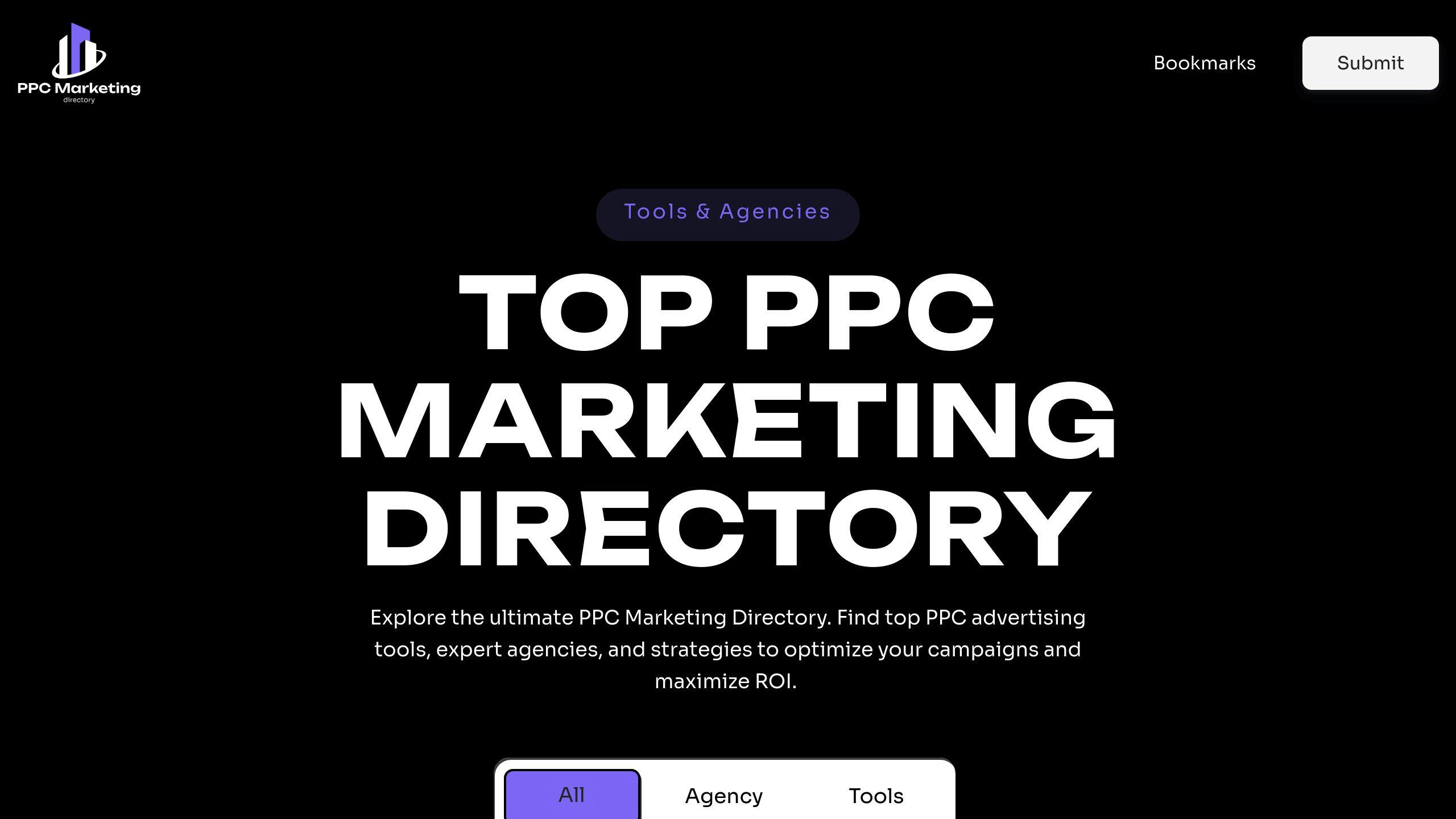
Looking to put these headline strategies into action? The Top PPC Marketing Directory offers tools and resources to help you fine-tune your PPC campaigns. This hub makes it easier to apply the techniques outlined in this guide.
| Resource Category | Tools | Benefits |
|---|---|---|
| Ad Copy & Performance | Optimization Software, A/B Testing Platforms, Analytics Solutions | Test and track headline variations with precision |
| Research & Analysis | Keyword Research Tools, Competitor Analysis | Spot trending terms and uncover market opportunities |
Here’s how the directory supports the strategies from this guide:
- Understanding Your Audience: Use research tools to find seasonal trends and user preferences, building on the keyword tactics from Section 2.
- Testing & Refining: A/B testing platforms streamline the process of experimenting with headlines, as discussed in Section 6, helping you make data-driven improvements.
- Adapting to Platforms: Tools designed for different PPC channels ensure your headlines stay consistent while meeting platform-specific needs, as covered in Section 5.
For tracking your campaign’s success, the directory also includes analytics tools that measure key metrics like click-through rates and conversions, tying back to the performance insights from Section 8. These resources allow you to adjust your headlines and stay ahead in PPC advertising.
Whether you're focusing on emotional appeals, testing numbers, or tailoring content for specific platforms, these tools make applying the strategies in this guide much more manageable.
